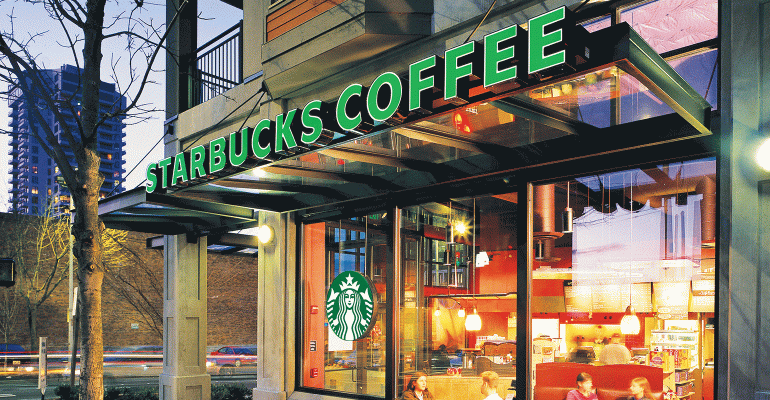Just as Starbucks was preparing the nationwide launch of its light-roast Blonde Espresso, the Seattle-based coffee chain had to do damage control over a hoax about one of its Atlanta locations.
A fraudulent post by someone claiming to be a Starbucks employee named Shanell Rivers emerged. She claimed to be tainting white people’s orders at the coffee house. The post quickly spread via Twitter on Sunday and Starbucks closed the restaurant.
On Monday morning Starbucks reopened the restaurant and responded: “The post is false. Starbucks does not have a partner (employee) by the name Shanell Rivers.”
Over the next couple of days much of Starbucks’ Twitter feed was repetition of that response, often with the additional comment that they were working with authorities to determine how the fraudulent post was made, as they responded to concerned and/or disgusted people on social media.
By Thursday Starbucks’ Twitter feed had returned to normal, responding to fans and promoting the new espresso. The crisis, apparently, has been contained.
Crisis communications expert Brad Ritter of Los Angeles company Ritter Communications said the key to managing situations like that is the three ‘C’s: Control, concern and communication.
That means communicating that you’re handling the situation, that you’re concerned about the welfare of your customers and that you’re working with the proper authorities or anyone else who can help address the problem.
“And it’s not just saying that, it’s demonstrating that,” he said.
Ideally, that expression of the three ‘C’s should be immediate, Ritter said, even if it’s something as simple as “We’re aware of a potential problem, and we’re working diligently to learn more. We will share information as we get it.”
He added that with social media outbreaks like the Starbucks one, it’s a good strategy to try to contain it to one form of social media.
“If it starts on Twitter, you try to contain it to Twitter,” he said.
The sooner you can say something, even if it’s general, the better, he said.
“There are these people who have this incessant need to hit the ‘share’ button,” he said. “If you don’t throw some water on the ‘share’ button right away, you’re going to be in trouble.”
Dan Bejmuk, CEO and co-founder of Dreambox Creations in Los Angeles, which handles the social media for many restaurant brands, said the Starbucks situation was “an extreme example of why companies that spend so much time developing their brands really find it so important to have real-time reputation management on digital.”
He said these crises can break so fast that social media should be monitored at all times during business hours, for national brands possibly starting at breakfast on the East Coast and ending at the close of business in Hawaii, or in the case of global brands like Starbucks, 24/7.
He said that although software can examine sentiment and “automatically escalate certain trending topics that may be relevant to the brand,” crises need the sort of judgment “that as of right now only a human can provide.”
And humans who are empowered to act, he added. A crisis management plan should be in place, he said, “so that if there is something that starts to get out of hand and it’s outside of business hours, making sure that … the chief marketing officer, the CEO or other c-level executives as needed can be looped in to be able to make very quick decisions that can have long-lasting implications for the brand.”
Bejmuk noted that the first tweet he saw about the Starbucks situation was at 4pm on Sunday, and he saw a Starbucks response at 10 a.m. the next day.
He said it likely took a while for Starbucks to determine that the post was, in fact, fraudulent.
“This was a screenshot of a tweet from a Facebook post,” he said, noting that not everyone uses their government name on Facebook, so Starbucks would have to go over its employee lists, possibly for every store in Atlanta since the location wasn’t specified.
He said he saw the 18-hour gap in response as a reasonable amount to make sure that they were accurate.
“If they were going to respond sooner and say, ‘Hey, we’re looking into this,’ that’s certainly an opportunity as well. I think that that probably could have happened earlier.”
Ritter said excessive caution can be a problem in these situations.
“This is often where brands get into trouble,” he said. “They don’t have information, they don’t have the facts, they don’t know what’s going on, therefore they don’t say or do anything, and it’s a fire that gets out of control.”
However, he added, make sure that whatever you say, no matter how general, that it’s accurate.
“Any misinformation that has to be corrected after the fact is very damaging to the brand’s reputation,” he said.
Bejmuk said Starbucks did the right thing by closing the store.
“Especially when you have anything that’s a threat to guests or employees, that’s the deal breaker,” he said. “That’s the scenario of, ‘All right, we need to get to the bottom of this before we put anyone in jeopardy’.”
Contact Bret Thorn at [email protected]
Follow him on Twitter: @foodwriterdiary





